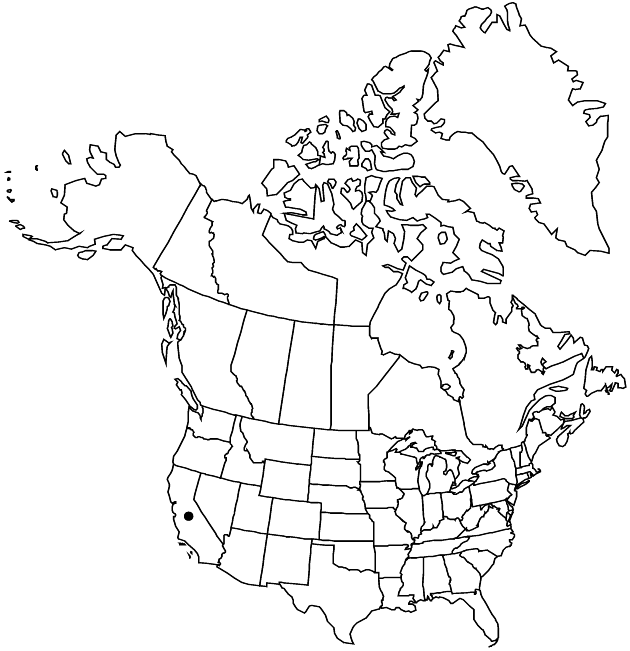Erigeron mariposanus
Erythea 7: 185. 1900.
Perennials, 15–28 cm; taprooted (root or caudex branches 1–4 cm, rhizomelike or caudexlike). Stems decumbent-ascending (distal branches spreading-ascending, axillary tufts of smaller leaves prominent at most nodes), sparsely to moderately strigose (hairs ascending-appressed), eglandular. Leaves cauline; blades oblanceolate, (25–) 30–45 × (2–) 5–8 mm, reduced near heads, margins entire, faces sparsely to moderately strigose, eglandular. Heads 1 or 2–4 (in loosely corymbiform arrays). Involucres mostly 4–5 × 8–12 mm. Phyllaries in 3–5 series, outer (midnerves prominently orange-resinous) sparsely strigose (hairs thin-based), eglandular (inner: margins broadly scarious, nearly winglike). Ray-florets 18–22; corollas bluish, 5–8 mm, laminae sometimes coiling slightly at tips. Disc corollas 4–4.5 mm (throats slightly indurate, not inflated). Cypselae 2–2.4 mm, 2-nerved, faces sparsely strigose; pappi: outer of setae, inner of 28–32 bristles.
Phenology: Flowering Jun–Aug.
Habitat: Foothill woodlands, substrate unknown
Elevation: 600–800 m
Discussion
Of conservation concern.
Erigeron mariposanus is closely similar to E. aequifolius.
Selected References
None.
